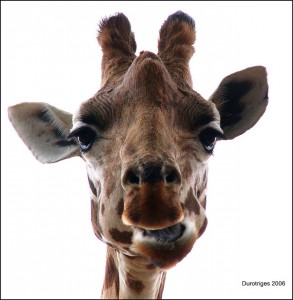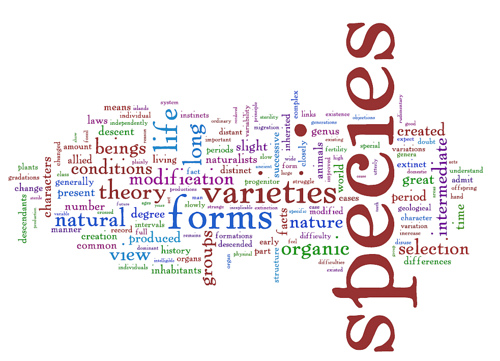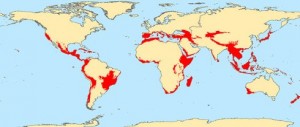Our planet is currently facing one of the most destructive extinction events in the history of the earth, with an estimated loss of 30,000 species per year, known as the Sixth Mass Extinction. The cause? Humans.
The pulp and paper and palm oil industries are causing species extinction left, right, and center in one of the planet’s most important biological hotspots—Indonesia.

Scientists have identified 25 “hotspots” of biological diversity, comprising a mere 1.4% of the earth’s surface, that contain an astounding 44% of vascular plants and 35% of vertebrates. Hotspots are chosen based on their high species richness (number of species), high level of endemism (how many species occur nowhere else in the world), and high threat from human activity. Why is it that a mere 1.4% of our earth’s surface, including hotspots rich in biodiversity like Indonesia, cannot be issued full protection at this time?
Our current solution to the incredible loss of species is protected areas, which are critical in an attempt to conserve our world’s biodiversity. However, a recent scientific paper published in the Marine Ecology Progress Series by scientists Mora and Sale explores whether protected areas are enough to preserve a significant amount of biodiversity. Their conclusion: definitely not.
The word “protection” is often used too loosely, as an incredible amount of land is only “protected” on paper. A large part of the conservation battle lies in increasing and solidifying these protected areas, but this alone is not enough to save even a fraction of our world’s precious biota. Consider the case of rainforest-destroying industry giant Asia Pulp & Paper: APP protects one small plot of land here, and destroys an entire forest over there. This is certainly not an effective way to protect areas deemed critical hotspots by leading scientists.

In theory, protected areas such as reserves and national parks are useful because they allow little to no resource extraction and minimize or prohibit development. In practice, however, protected areas tell a different story. Look at the Indonesia Moratorium, for example. Sixty four million hectares of tropical forest are supposedly preserved, but the actual picture on the ground is very different as forests continue to be logged and peatlands drained.
It’s clear that protected areas are too small and too few. We are currently protecting a very small percentage of the earth’s surface. Since we do not have the resources or means to protect all of the land on our planet, scientists suggest we must first place priority on biodiversity hotspots, areas of utmost importance to global biodiversity.
Indonesia is a one such priority area, the protection of which scientists consider critical to not only preserve species, but also to mitigate severe climate change. Indonesia contains some of the oldest and most valuable forest in the world, and its high species richness, endemism, and severe threat has recently led to its listing as a UNESCO World Heritage Site in Danger.

Another huge challenge with protected areas is poor enforcement. National parks with which we are most familiar in the United States tend to have fairly strict protection, but those in developing nations, particularly Southeast Asia, are overwhelmingly what we might call “paper parks.” Many areas issued protection are drawn on maps as reserves, but little to no enforcement exists. Corruption and unmonitored practices such as illegal logging and extraction of wildlife for the pet trade occur all too frequently.
At the current rate of population expansion, protected areas will collapse in the near future as we struggle as a species to extract enough resources to survive and will be forced to expand onto protected lands. Not only is curbing population growth paramount to conserving our resources, but lowering the egregious consumption rate per person, especially in developed nations such as the United States, is just as crucial. We live in a society that measures success by growth, and growth is measured by an increase in the appetite of consumers. Our current model is conducive to destroying the planet and its resources, and this must change in order for our planet to be sustained in its current form for future generations. Just like any individual population, the earth itself has a carrying capacity, and we are nearing the tipping point after which many biota will no longer be able to survive, and neither will we.